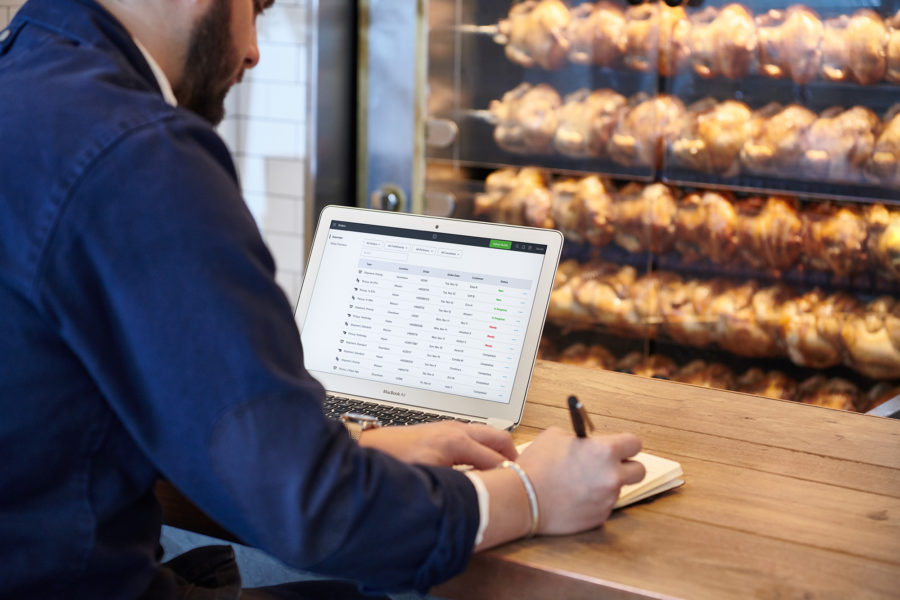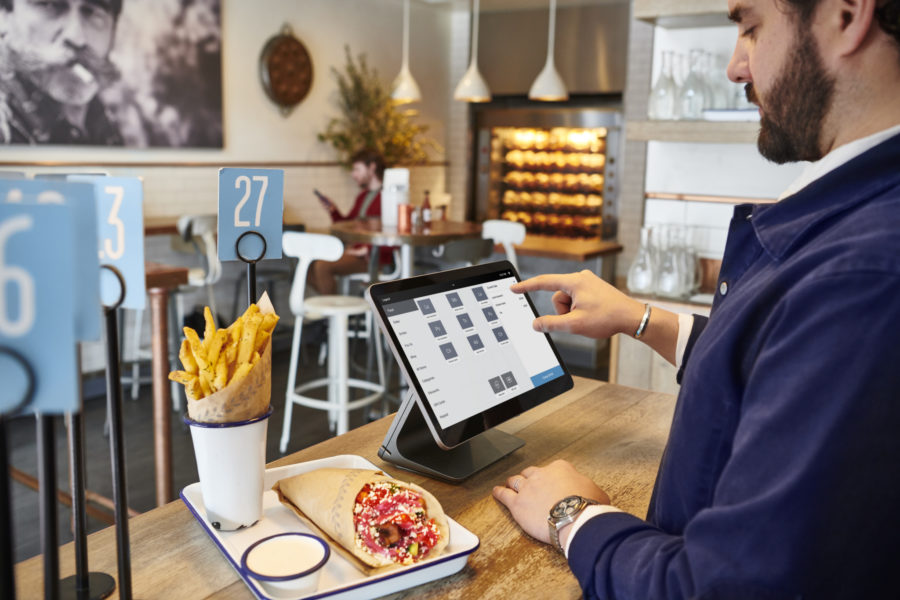David Rusenko on The Future of Technology for Restaurants
How can technology help businesses pivot and thrive amid a global pandemic? To answer that question, Jennifer Leuzzi welcomed David Rusenko, General Manager of eCommerce at Square, to Tech Bites. They discuss what the company is doing to support its customers in the face of unprecedented challenges and the role technology can play in helping restaurants gain greater control over their business. Below, read an excerpt of Jennifer and David's conversation, or listen to the full episode here.
Jennifer Leuzzi: [When shelter in place took effect] did you immediately see things happening in the market [or] was there a pause for the first few weeks where people were thinking they were going to go back to normal?
David Rusenko: Right around the time that it started to become obvious that things were really escalating, we were hearing from a lot of our sellers and restaurants [about] what was coming next and how it was going to affect them. And so right around that time when San Francisco did move to shelter-in-place, we had a team meeting and just reprioritized what it was that we were going to work on. We just threw our old road map out and came up with a new road map of what was going to be needed going forward. And because of that, within 48 hours of San Francisco going into a shelter-in-place, we launched a curbside pickup and within a week we launched delivery.
JL: Did you pull these services out of a bucket you would not have been looking at before? Or is it something you knew was coming and you just accelerated the pace to get there sooner?
DR: I think a little bit of both, for sure. You know, some things like curbside pickup, that was a fairly new need in terms of it just really rising in prominence in what consumers were expecting. Then, on the other hand, something like delivery, that was something we were already building and planning on launching. A lot of these trends were pre-existing and I like to think that the pandemic shortened what would have otherwise been a three year adoption cycle down to three weeks. It really caused a lot of restaurants to very quickly adapt to the new situation. But these were changes that a lot of people were already looking to make, just over a longer time frame. And I think, if there does end up being some silver lining out of this, it’s that a lot of these changes will ultimately help businesses grow stronger.
JL: I always joke that the tech level of restaurants is pencil on cocktail napkin in many instances - because they're focused on making the best pizza or the best coffee. It's very challenging, but people who are able to create multi-channel opportunities for their business and meet their customers where their customers want to be are successful. It's a question of how do you let more restaurants know what's possible or help them with that roadmap?
DR: You know, I think a lot of restaurants are obviously, like you said, very much focused on the food. That's the core business. But a lot don't spend as much time focusing on the business of food and understanding what is the brand that they're creating. How can they really own that brand? How can they re-engage? There's a lot of parallels, actually, with with the travel industry and making sure that you form a very strong relationship with your recurring customers. There will be lots of sources to attract new customers, but at the end of the day, it will be critically important for restaurants to really develop a strong direct channel where they can create incentives for their repeat customers to come back and order from them directly.
Those incentives could be things like loyalty discounts, free delivery offers, either a percent off or the 10th order free or that or that kind of thing. It could also be things like offering preferred menu items that are only available during really busy times. And so I think one of the things that has been critical is setting up a channel and some form of online ordering page where people can come in and order for pickup or delivery directly from you. But this is the channel that offers the best margins. This is the channel that you really want to start to form that relationship with your customers around and make sure that all your repeat customers keep coming directly to you. And I think that is something that's really going to help a lot of restaurants who are struggling to continue to thrive so that they don't see their margins continue to get squeezed.
JL: So the more technology restaurants use, they decrease their opportunity to have a direct relationship with their customer because it's almost as if every order, contact, communication stream is [controlled by a] third party. One of the interesting things about the On-Demand Delivery and also about Square in general is that it seems you're trying to create a closed loop in giving the restaurant the greatest control and letting the business be the first point of entry into the business versus another entity. Do you think this is going to be a trend that we'll see where technology [at first] opened up the doors to everybody to take a piece out of restaurants and maybe now technology is going to be able to help restaurants control their own channels of connectivity with their customers?
DR: I think you're absolutely spot on. It’s an interesting point for restaurants to think through, you know, how does this play out over the next two to five years? In a certain sense, you could use technology to fight fire with fire, if you will. But I think that's where Square is very different and very unique in terms of what we're trying to do. Square’s business model is interesting - we're only successful if you're successful. And we don't charge huge monthly fees and we don't charge a huge commission. It's our goal to really provide that platform for restaurants to be able to own that direct channel and to do so at a cost structure and margins that make sense for them.
We could sort of envision two different versions of the future that are simultaneously playing out. In one version of the future, an interesting but also very worrying trend is this ghost kitchen trend. What we're seeing is some companies start up where they're creating this food brand and they're putting it out there on delivery apps. And then they're going to restaurants and say, hey, can you be our ghost kitchen and make our food for us? We'll give you the recipes. You know what? What they're effectively doing is they're disaggregating the brand from the making of the food. And so they're just focusing all of their energies almost like a marketing company. And this is kind of a dangerous place for a lot of restaurants to get into because eventually you're just an outsourced kitchen and there's really not going to be any interesting growth opportunities out of that.
On the flip side, you have a platform like Square Online Store where again, we're trying to create that direct channel that restaurants can build on top of. You can imagine how this can play out over time. You know, someone comes in for dine-in service and you're able to capture their email address or their contact information. You're able to send out marketing communications to them to encourage them to order delivery. And over time, you actually build a very robust direct first party channel where you actually have a large amount of your business flowing through. That's something you control directly. It's your brand. You engage with your loyal customers. They come directly back to you and through something like On-Demand Delivery, which Square just launched, you're even able to provide delivery services through partnership with Postmates or other services where you just pay a flat delivery fee. You really need to build that center of mass where you have a lot of repeat purchases as your loyal customers come directly to you and encourage that behavior. You can engage directly with your customers and they know who you are and have affinity for coming back directly to you.
JL: In many ways, this is what we're talking about - we're looking at how you can use technology to bring people into your restaurant and into your business virtually so you can actually have a relationship with them. Any any last thoughts for what you see happening in the future?
DR: We're very focused on continuing to build out a platform that can help restaurants engage with customers [and] operate efficiently. There will be a time when the pandemic is over and things are back to normal. And whatever that normal looks like, I think that there will be an opportunity to run your business on a technology platform that really solves a lot of the problems that were bubbling over before the pandemic - that is able to help you engage with your customers more efficiently, run your business more efficiently. Even things like payroll and removing a lot of the hassle around being able to pay your staff and carrying out tips and how quickly they can have access to funds. I think that may be difficult to see now, but there is a brighter future ahead. And I think that there will be an opportunity to emerge stronger and to be more competitive when this is all said and done.












